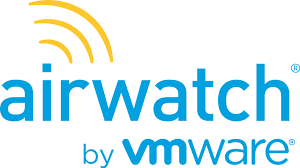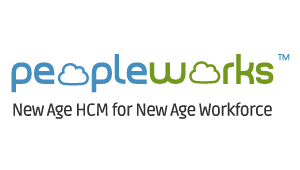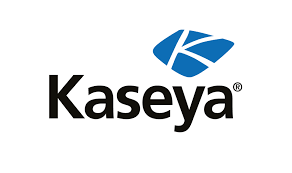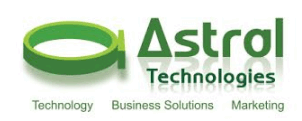What Is Enterprise Mobility Software?
A system called enterprise mobility software, sometimes referred to as enterprise mobility management (EMM) software, enables businesses to effectively manage and safeguard the mobile devices, apps, and data that their staff members utilize for work. This software guarantees a uniform user experience across all devices and gives organizations centralized control over their mobile devices.
The capacity of enterprise mobility software to manage a wide variety of devices, such as laptops, tablets, smartphones, and even Internet of Things (IoT) devices, is one of its primary benefits. It makes it simpler for businesses to support their employees' mobile devices by providing features including device provisioning, application deployment, device configuration, and remote troubleshooting.
Enterprise Mobility Software offers strong security features to safeguard confidential company information in addition to device management. It helps businesses to avoid unwanted access to company data by enforcing rules and limitations such data encryption, stringent password requirements, and remote wipe capabilities. This is particularly important in the mobile workforce of today, where cyberattacks and data breaches are becoming more frequent.
Additionally, Enterprise Mobility Software provides sophisticated reporting and analytics features that let companies learn more about how their mobile apps and devices are being used. Utilizing this data helps optimize device utilization, lower expenses, and boost general productivity. Your organization's unique needs, such as the quantity and kinds of devices that must be managed, security specifications, and financial constraints, should be taken into account while searching for enterprise mobility software.
Selecting a solution that includes capabilities that are easy for both IT managers and end users to use and connects effectively with current IT systems is also advised. All things considered, enterprise mobility software is an essential tool for companies of all sizes looking to attain efficiency, security, and mobility in the current digital world. Its extensive capabilities make it a crucial investment for businesses hoping to adopt a mobile-first strategy and maintain their competitive edge.
What Are The Recent Trends In Enterprise Mobility Software?
Software for enterprise mobility is always changing to satisfy the shifting requirements and needs of companies. To stay competitive and effective, businesses must keep up with the most recent developments in corporate mobility software as technology develops. We will examine current workplace mobility software trends in our buyer's guide to assist you in making well-informed choices when purchasing a solution for your company.
1. Cloud-Based Solution: Adoption In recent years, cloud-based enterprise mobility software has grown in popularity. The scalability and flexibility of cloud solutions, along with the increasing popularity of remote work, are the main drivers of this trend. This facilitates employees' remote and mobile work by enabling organizations to access their data and apps from any location at any time.
2. Artificial Intelligence: Ascent Enterprise mobility software is increasingly incorporating artificial intelligence (AI), which gives businesses access to potent features like virtual assistants, natural language processing, and predictive analytics. Solutions driven by AI have the potential to increase output, optimize workflows, and provide more individualized user experiences.
3. Improved Security: Elements Businesses are now very concerned about security as a result of the growing use of personal devices. Because of this, workplace mobility software today has sophisticated security features including data encryption, multi-factor authentication, and remote wipe capabilities. These characteristics guard against unwanted access and guarantee the security of private company information.
4. Internet Of Things (IoT): Integration Enterprise mobility software is not an exception to the Internet of Things' (IoT) explosive growth. Through IoT integration, companies can gather and examine enormous volumes of data from linked devices, empowering them to optimize their operations and make data-driven choices. Industries including manufacturing, healthcare, and transportation can benefit greatly from this trend.
5. Design: With the User in Mind These days, enterprise mobility software is created with the end user in mind, giving usability and user experience more weight. Employee adoption and happiness are enhanced by user-centered design, which raises output and efficiency.
6. Support For Bring: Your Own Device (BYOD) Another trend that is becoming more and more popular in businesses is Bring Your Own Device (BYOD). BYOD allows workers to access work-related data and apps on their personal devices. Businesses may increase employee happiness and save money by implementing enterprise mobility software that supports BYOD rules.
Benefits Of Using Enterprise Mobility Software
Enterprise mobility software is becoming an essential tool for companies looking to increase productivity and streamline processes. This cutting-edge technology lessens reliance on conventional office setups and encourages flexible work arrangements by allowing employees to access company data and complete tasks while on the go. Because workplace mobility software has so many advantages, it is a necessary investment for any contemporary business.
The following are some of the main benefits this program provides:
1. Enhanced Efficiency And Productivity: Regardless of a worker's location or device, enterprise mobility software facilitates smooth communication and teamwork. Because of this, jobs can be finished in real time, which speeds up procedures and boosts output all around. Employee productivity can continue even while they are not in the office because to the ability to access critical data and complete activities remotely.
2. Cost Savings: Companies can lessen their need on actual office space and equipment by implementing workplace mobility software. Real estate, utilities, and equipment maintenance costs are significantly reduced as a result. Additionally, by streamlining procedures and eliminating the need for manual labor, the software's automation features can further reduce expenses.
3. Better Customer Service: Employees can communicate with clients more quickly and efficiently and have access to vital customer data thanks to workplace mobility software, which enhances customer service. This can result in improved customer satisfaction and quicker reaction times for field service staff. Customers are guaranteed a smooth and effective experience when they can access data and take action from any location.
4. Improved Data Security: To protect critical company information, enterprise mobility software has sophisticated security measures. In the event that a device is misplaced or stolen, this offers remote wipe capabilities, multi-factor authentication, and encryption. Businesses may be sure that their data is secure and private with these security measures in place.
5. Scalability: A company's staff and technological requirements expand along with its size. Software for enterprise mobility can readily grow to meet the needs of a growing workforce and evolving business needs. This guarantees that the technology will continue to be useful and relevant throughout time and does away with the requirement for frequent software updates.
6. Competitive Advantage: It's critical to stay ahead of the competition in the fast-paced corporate world of today. Businesses can gain a competitive edge by using enterprise mobility software to quickly adjust to shifting consumer expectations and market conditions. Businesses can react more quickly and make better judgments when they have the flexibility to access data and complete tasks remotely. This makes their operations more successful and competitive.
Important Factors To Consider While Purchasing Enterprise Mobility Software?
Buyers should evaluate a number of crucial criteria when contemplating the purchase of enterprise mobility software. Buyers may make sure they choose the best software for their business needs and make an informed choice by carefully weighing these considerations.
Before making a purchase, take into account the following important factors:
1. Business Goals And Objectives: Determining your company's goals and objectives is the first step in acquiring enterprise mobility software. This will assist you in identifying the precise features and capabilities you require from the program. Think about the issues you are attempting to resolve and the goals you have for the software. This will assist you in choosing the best option that fits your company's goals.
2. Scalability And Flexibility: Your mobility requirements may change as your company expands. In order to handle future expansion and modifications, it is crucial to select software that is both adaptable and scalable. Seek out a system that can readily adjust to your evolving business requirements without requiring more funding or generating interruptions.
3. Integration Capabilities: To function effectively in the modern digital environment, businesses depend on a variety of systems and applications. Thus, it is essential to confirm the integration capabilities of enterprise mobility software before making a purchase. To prevent any incompatibilities, make sure it can be easily integrated with your current tools and systems.
4. Security Features: When it comes to mobility solutions, security is a major concern for enterprises. Make sure to carefully consider the software's security features. This covers safe data transport methods, authentication procedures, and data encryption. To safeguard sensitive data, it's also critical to confirm that the software conforms with industry norms and regulations.
5. User-Friendly Interface: One important consideration is how simple the software is to use. When it comes to staff onboarding and training, a simple and user-friendly design will save you time and money. A user-friendly design will also boost adoption and guarantee that your staff is making efficient use of the program.
6. Technical Support And Training: Having access to technical support and training services is crucial when purchasing corporate software. Choose a supplier that provides thorough training materials, including webinars, tutorials, and user manuals, along with round-the-clock technical assistance. This will assist you in resolving any potential problems and maximizing the software's capabilities.
7. Software Cost And Return On Investment: Finally, take into account the software's cost and possible ROI. Even if choosing a less expensive option could be alluring, it's crucial to evaluate the software's ROI and long-term advantages. Keep in mind that while a feature-rich, high-quality solution may cost more up front, it might save you money over time by boosting efficiency and productivity.
What Are The Key Features To Look For In Enterprise Mobility Software?
There are a number of important factors to take into account when selecting the best enterprise mobility software for your company. These features will improve your overall productivity and efficiency in addition to streamlining your operations. Therefore, the following are the most important attributes to consider in enterprise mobility software before investing:
1. Scalability: Since your company's needs will change and grow over time, scalability should be your first consideration. As the number of people, devices, and operations increases, your enterprise mobility software should be able to adapt to these changes.
2. Security: Having strong security measures in place has become essential due to the rise in remote work and reliance on mobile devices. Seek out enterprise mobility software with cutting-edge security features like device management, safe content sharing, data encryption, and device-level protection.
3. Integration: The integration of your enterprise mobility software with your current workflows and systems should be smooth. This will guarantee seamless operations and data sharing across all platforms, in addition to saving you time and money.
4. Customization: Every company has different requirements and procedures. As a result, you should be able to customize the enterprise mobility software you select to meet your unique needs. This will enable you to get the most out of the software and optimize it for your company.
5. Analytics And Reporting: Comprehensive analytics and reporting functions must to be included in any enterprise mobility software. This will assist you in identifying areas for improvement, tracking the effectiveness of your mobile operations, and making data-driven decisions.
6. User-Friendly Interface: The program ought to have an intuitive user interface that is simple to use and comprehend. This will guarantee that, without requiring intensive training, your staff can immediately become accustomed to the new system and utilize it efficiently.
7. Offline Capabilities: Having mobile solutions that can operate without an internet connection is crucial in the fast-paced commercial world of today. Seek out enterprise mobility software that has offline capabilities so that your staff may keep working uninterrupted.
8. Cross-Platform Support: Windows, iOS, Android, and other operating systems should all be supported by your enterprise mobility software. Regardless of the device they are using, this will guarantee that your staff can access and utilize the program.
9. Collaborative Features: Effective teamwork requires communication and collaboration. Seek out enterprise mobility software with collaboration capabilities like task management tools, document sharing, and real-time chat.
10. Customer Assistance: Finally, but just as importantly, confirm that the software provider provides prompt and dependable customer assistance. This will guarantee that any problems or worries you might have are resolved quickly, enabling you to maximize your investment. In conclusion, careful evaluation of these crucial aspects is necessary when selecting the best enterprise mobility software. You may make an informed choice that fits your demands and business objectives by keeping these in mind.
Why Do Businesses Need Enterprise Mobility Software?
Enterprise Mobility Software (EMS) is necessary for businesses for a number of reasons. With the help of EMS, businesses can effectively manage and maximize their mobile operations. It helps companies to increase customer satisfaction, productivity, and process efficiency. EMS is crucial for businesses of all sizes and sectors in the fast-paced business environment of today, where working remotely is increasingly the standard.
Increasing productivity and efficiency is one of the main reasons firms want EMS. No matter where they are, staff members may access vital data and applications on their mobile devices with EMS. They can now work from anywhere at any time because they are no longer bound to their desks. Employees can react quickly to critical duties because to this mobility, which also boosts productivity.
Additionally, EMS saves firms money and time. Businesses may remotely monitor and upgrade their employees' devices with capabilities like mobile device management, which eliminates the need for expensive and time-consuming in-person IT assistance. In order to assist organizations track and control mobile device spending and eventually save money, EMS also provides tools like expense management.
EMS's capacity to improve data security is yet another important benefit. Businesses deal with sensitive and private data in today's digital environment, which needs to be protected at all costs. To guarantee that sensitive data is protected even when accessible through mobile devices, EMS offers features like remote wipe capabilities, secure content sharing, and mobile app control.
Additionally, EMS enables companies to enhance the client experience. Businesses may communicate with clients in real time and respond to their questions or problems quickly and effectively by using mobile devices. This enhances client satisfaction and builds a favorable brand image.
How Much Time Is Required To Implement Enterprise Mobility Software?
The complexity of the program, the size of the company, and the particular needs of the enterprise are some of the variables that affect how long it takes to adopt enterprise mobility software. The implementation procedure can take a few weeks to several months on average. Analyzing the current infrastructure and determining whether the software is compatible with the systems in place is the first step in the implementation process.
Depending on the organization's size and the complexity of its IT infrastructure, this procedure could take several weeks. After compatibility has been determined, the program must be tailored to the organization's unique requirements. This entails configuring user access levels, security procedures, and system integration with CRM and ERP, among others.
Depending on the project's size, this customisation procedure may take a few weeks to several months. The program must next be tested in a controlled setting to guarantee its performance and usefulness when customisation is finished. To work out any flaws or problems that may come up, this process could take a few weeks.
The software's implementation and dissemination are the last stages after it has undergone extensive testing and all required modifications have been made.This entails transferring data from the old systems to the new one and educating staff members on how to utilize the new software. The size of the organization and the volume of data that needs to be moved can affect how long this stage takes.
Enterprise Mobility Software deployment might take anywhere from a few weeks to several months in total. Enough time and resources must be set aside for a successful implementation procedure that satisfies the unique requirements of the company. Working closely with the software provider is also essential to guaranteeing a seamless and effective implementation process.
What Is The Level Of Customization Available In Enterprise Mobility Software?
By facilitating remote access to business apps and data, enterprise mobility software encompasses a variety of solutions intended to improve efficiency, productivity, and teamwork inside an organization. The degree of customisation that an enterprise mobility software provides is one of the most important things to take into account. In order to guarantee that the software satisfies the unique demands and specifications of your company, customization is essential.
Each provider offers a different degree of customisation for workplace mobility software. Certain solutions provide a great deal of flexibility, enabling substantial customization to meet the particular requirements of any company. Features like individualized dashboards, adjustable workflows, and system and application integration are common examples of this degree of customisation.
However, some workplace mobility software may offer a more uniform product with fewer customisation choices. Businesses with a simple workflow that don't need a lot of software customization would find this choice appropriate. It is crucial to take into account the precise features and capabilities that can be altered when assessing the degree of customisation that is possible in workplace mobility software.
This covers data storage and access, security features, user interface, and system integration. Additionally, it's crucial to take into account how simple it is to customize. While some systems offer a user-friendly interface that enables organizations to customize the software without the need for specialist skills, others may require substantial coding and technical experience to make even simple modifications.
The scalability of the customizing choices must also be taken into account. You might need to make more software modifications as your company expands and changes. As a result, it's critical to confirm that the workplace mobility software you select can readily handle updates and modifications in the future.
Which Industries Can Benefit The Most From Enterprise Mobility Software?
One effective tool that has the potential to revolutionize business operations is enterprise mobility software. Employees can use mobile devices to obtain vital information and carry out corporate operations at any time and from any location. Enterprise mobility software is now essential for companies in a variety of industries due to the growing trend of remote work and the demand for effective communication and teamwork. The following sectors stand to gain a great deal from enterprise mobility software:
1. Healthcare: To provide prompt and precise patient treatment, mobility is essential in the healthcare sector. Healthcare workers can use enterprise mobility software on their mobile devices to connect with patients and coworkers, track appointments, dispense medication, and access patient records. Enterprise Mobility Software can boost the uptake of telemedicine and increase the effectiveness of healthcare delivery by optimizing these procedures.
2. Retail: To improve operations, boost sales, and improve customer experience, the retail sector can also benefit from Enterprise Mobility Software. Retail staff can handle transactions, interact with consumers, and get real-time inventory information while on the go thanks to this software. Additionally, it can help retailers gather and evaluate important data so they can optimize supply chain management and make well-informed business decisions.
3. Transportation And Logistics: Enterprise Mobility Software has grown crucial in this sector due to the growing need for dependable and quick transportation and logistics services. By enabling real-time communication with clients and suppliers, tracking shipments, and updating delivery status, this program enhances operational efficiency.
4. Construction: Enterprise Mobility Software is essential for effective project management in the construction sector, where employees are frequently on the go. Field workers can make fast judgments and maintain communication with the rest of the team by using their mobile devices to access project plans, blueprints, and timetables. Additionally, by enabling real-time project status updates, this program lowers the possibility of delays and boosts output.
5. Banking And Finance: Enterprise Mobility Software is essential to providing safe and easy access to key data and apps in the heavily regulated banking and finance sector. Additionally, it facilitates effective staff cooperation, which speeds up and improves customer service and financial transactions.
Conclusion
We have now covered the many features and advantages of enterprise mobility software, which is an essential tool for companies trying to increase productivity and mobility. We have outlined the most important factors that customers should take into account while looking for the best solution thanks to our thorough examination of various suppliers and their products. First and foremost, selecting the best enterprise mobility software requires a thorough grasp of your company's needs and goals.
This will assist you in identifying the features you need, like data security, application administration, and mobile device management, among others. Additionally, because your business needs may alter and expand over time, it is critical to evaluate the software's scalability and flexibility.
Long-term performance also depends on the ability to interact with other business systems and adjust to new technology. Furthermore, because it has a significant influence on staff adoption and productivity, the software's user interface and experience must be carefully considered.
Before deciding, be sure to try the software out or see a demo. Additionally, cost-effectiveness and budget are important considerations. Some enterprise mobility software may appear expensive initially, but because of their extensive feature set and administrative capabilities, they can end up being quite cost-effective over time.
Finally, to identify the ideal vendor for your company, we advise doing extensive research and contrasting several suppliers. Before deciding, take into account their deployment options, customer support, and reputation.






















